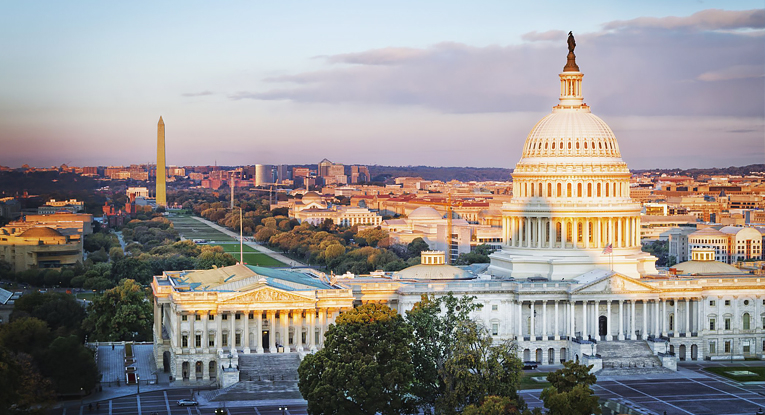Supreme Court Ruling Curtails EPA Oversight of Wetlands – Check State Rules Before Acting
On May 25, 2023, the United States Supreme Court in Sackett v. Environmental Protection Agency held that the federal Clean Water Act applies only to wetlands that are “indistinguishable” from the bodies of water they adjoin through a “continuous surface connection.” The decision is likely to lead to further uncertainty as to which “wetlands” are regulated, while testing the strength of state laws to protect wetlands no longer within the U.S. Environmental Protection Agency’s (USEPA) reach.
The Clean Water Act permits USEPA to regulate discharges to “waters of the United States.” But when it comes to wetlands, the term “waters of the United States” has been a persistent point of confusion over the decades, resulting in several agency rules and numerous lawsuits challenging those rules. At issue in Sackett was USEPA’s attempt through regulation to extend the definition of waters of the United States to include so-called “isolated” wetlands, which have no direct connection to a flowing “water of the United States” but may have a connection to interstate commerce due to, for example, the arrival and departure of migratory birds.
Prior to Sackett, the Supreme Court wrestled with the same issue in Rapanos v. United States, 547 U.S. 715 (2006) where the Court was unable to muster a majority opinion. Four justices concluded the Clean Water Act was applicable to certain relatively permanent bodies of water connected to traditional navigable waters, and to wetlands that are indistinguishable from those waters. One justice, concurring only in Rapanos’ judgment, wrote that Clean Water Act jurisdiction over adjacent wetlands requires a “significant nexus” between the wetland and its adjacent navigable waters, which exists when the wetlands significantly affect the chemical, physical and biological integrity of those waters. Thus, the “significant nexus” test was born. USEPA ultimately adopted a rule declaring that the Clean Water Act’s jurisdiction broadly covered traditional navigable waters, interstate waters and the territorial seas, as well as their tributaries and “adjacent” wetlands. Adjacent wetlands included even intrastate lakes and ponds, streams, or wetlands that either have a continuous surface connection to categorically included waters or have a significant nexus to interstate or traditional navigable waters. Thus, to determine if a wetland was a “water of the United States” and therefore subject to Clean Water Act jurisdiction, USEPA had to consider a list of open-ended factors to determine if the wetland had a “significant nexus” to interstate or traditional navigable waters.
In Sackett, petitioners Michael and Chantell Sackett purchased property near Priest Lake, Idaho, and began backfilling the lot with dirt to prepare for building a home. USEPA informed the Sacketts that their property contained wetlands and the “dirt-filling” violated the Clean Water Act because the property was near a ditch that fed into a creek, which fed into Priest Lake – a navigable water of the United States. The “significant nexus”, according to USEPA, was the ditch to Priest Lake. The Agency then ordered the Sacketts to restore the site, threatening penalties of over $40,000 per day.
The District Court and Ninth Circuit sided with USEPA, holding that the Clean Water Act covers wetlands with an ecologically significant nexus to traditional navigable waters. The Supreme Court thought differently. Seeking to clarify the state of the law after Rapanos, the Court determined that USEPA’s significant nexus test unreasonably expanded the scope of the statutory authority Congress had granted them under the Clean Water Act. While all nine justices agreed that USEPA’s enforcement action against the Sacketts’ property was wrong, not all nine justices could agree on the appropriate standard to be used. But a majority of the justices, led by conservative Justice Samuel Alito, held that to be regulated under the Clean Water Act, a wetland must be effectively “indistinguishable” from the navigable body of water it adjoins, and rejected the “significant nexus” test developed by USEP after Rapanos.
Sackett’s clarification of the Clean Water Act’s jurisdiction significantly curtails the role USEPA and the U.S. Army Corps of Engineers can play in the “filling” or encroachment of wetlands with no direct connection to an open water. In the absence of a visually apparent surface connection, it now appears USEPA is without authority to act. As argued in the concurring opinions, the majority’s rule would seem to constrain USEPA’s regulatory hold on a project, even for open waters which are separated from traditional navigable waters by manmade or natural structures, such as dikes or barriers, natural river berm and beach dunes. While clearer, this new rule opens a host of thorny questions, such as the management of wetlands that are connected for most of the year but not in the summer when the connection may dry up, or wetlands whose connections frequently change due to storms, floods or erosion. USEPA is likely to publish regulations regarding these questions but, in the meantime, we expect to see a significant reduction in the number of projects requiring federal wetlands encroachment approvals, and significant new challenges to existing Army Corps mapping of so-called “jurisdictional” wetlands.
However, it is important to note that most states have their own wetlands programs, and many of the states which have independent programs define wetlands differently, and in a manner which does not require a physical connection to a navigable water. Indeed, some states define wetlands based on the types of soils and plants present in an area, as well as the nature of the connection between the “wet” area and the groundwater table. Wetlands are an important resource to filter water entering our aquifers and to absorb stormwater flow to mitigate flash flooding. While the majority opinion in Sackett significantly curtails USEPA’s jurisdiction over “interior” wetlands, your state may still have a program which requires wetlands delineation and permitting for any developmental encroachment.
Armstrong Teasdale’s Environmental lawyers will continue to monitor developments in this important area of environmental law and are available to answer your questions. If you have questions specific to your planned development, please contact your Armstrong Teasdale lawyer or one of the authors listed below.









































